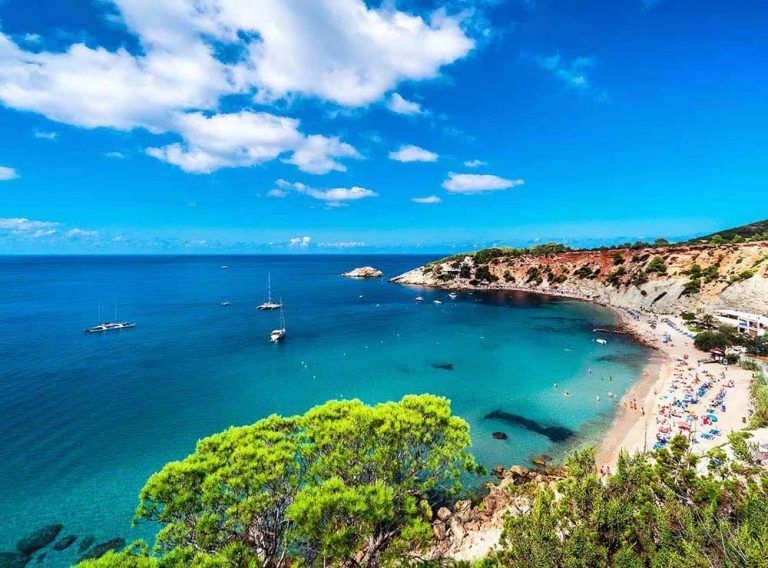
Tourism cap could quash Mallorca´s all-time high tourism demand
26.04.2018
Stephen Penn, content editor at Abode2, takes a closer look at the impact of the tourism cap sweeping the Balearic Islands: Demand for holiday homes in Mallorca is at an all-time high, but thanks to caps on tourism rentals, there are strong concerns the supply cannot keeping up – as 3,620 accommodation places leave the market. Over the past two years, the number of people looking for exclusive holiday rental properties on the Balearic Islands has soared, with people looking more and more for ‘hidden’ locations on the sun-swept hotspots of Mallorca and Ibiza. In a bid to offer these private getaways, more and more property owners on the islands have been offering their homes to short-stay tourists, in order to capitalise on this demand. Rental prices have risen by double digits over the past few years due to the popularity of shared homes via sites such as San Francisco-based Airbnb, which in turn has priced has many locals out of the market. "The living situation has become unsustainable due to the increase in people using digital accommodation brokers such as Airbnb,” explains Vincent Torres, the general manager of the City of Ibiza Council’s tourism department. “We want to shift the housing situation to benefit long-term residents of the island, as things have spiralled over the past few summers – to no one’s benefit." In a bid to combat this issue and equal the playing field for locals and tourists, last year the government introduced a new law, enforcing a cap of 623,624 beds that can be used for tourists, as well as stricter enforcement of property owners having a DRIAT (Documento de Responsibilidad de Inicio de Actividad de Turismo) license for apartments and EVT (Estancia Turística en Viviendas) licenses for villas. The EVT licenses have been a requirement for years on the islands, allows owners of villas, fincas and chalets to advertise and let out their properties to tourists for short periods of time. These licenses come with restrictions, including properties having no more than 6 bedrooms and a bathroom for every three guests. DRIAT licenses for apartments are harder to come by. A spokesman for Engel & Volker’s explained to Abode2 that apartments cannot be rented out for holiday lets of less than one month, unless they are in existing designated buildings where there is a tourist license for the building. For years apartment owners have circumvented these rules, but now the government is cracking down and those who let out their apartments or villas without the correct paperwork, run the risk of being slapped with a serious fine. In addition to this, as of July last year, in a bid to tackle the ever-growing prices of rentals in places like Mallorca and Ibiza, a moratorium was put in place, meaning no new licenses will be issued until July 2018. Those with existing licenses will not be affected at the present time. This movement has been welcomed by a number of property rental companies, including Engel & Volkers. “For the local government, the main problem has been focused on the apartment market. It is important to understand that renting out apartments for short term holiday lets (under 1 month) is and always has been illegal in this region of Spain,” explains Dominique Carroll from Engel & Volkers. “Now, as the local government have introduced large fines of up to fines of up to €400,000 for platforms offering illegal housing, and fines of up to €40,000 for private owners, people will think twice about doing this.” Since the holiday rentals legislation came into force, 574 properties with 3,620 accommodation places have been removed from the market. But some have hit out at the impact this will have on companies like Airbnb, which is currently in a legal battle over an alleged breach of the regulations, as well as working class families who rely on rental income. "We strongly believe that rules in the Balearic Islands should help spread tourism benefits to local families and their communities - not keep them in the hands of a wealthy few,” says a spokesman for Airbnb. Despite this opposition, the change has been celebrated by the government. Tourism minister Bel Busquets publically stated last month that the reduction in illegal homes has been a ‘positive move’ and that it is fundamental to the objective of ‘changing the economic model’ of the Balearics. Other Spanish cities, including Madrid, Barcelona, Malaga, Seville and Valencia, have taken note from this change and have either passed laws, or are examining regulation, to curb tourism rentals via the sites because of their effects on local rental prices. For the latest property news and insights, visit www.abode2.com

Picture postcard perfection in Platja d'Aro
11.04.2018
One of just 19 Catalan Official Family Holiday Destinations, Platja d'Aro has grown from a small fishing village to a town that offers something for everyone. It is a fantastic place to rent one of our holiday villas if you are travelling to the Costa Brava with friends or family for a holiday. Platja d'Aro is the beach area just 3km from the nearest town of Castells d'Aro. A town steeped in history with Castillo de Benedormiens, a castle which dates back to 1041 being one of the main attractions. There are medieval towers to see here and El Parque dels Estanys, a 150,000 m2 wildlife park which has over 250 species of birds. Daily walking tours and lookout points are just some of the attractions at this very popular local gem. If you really want to partake in a local custom and you are in the area on the 23rd April, remember to buy a book and a rose to give to your significant other. The 23rd April is St Jordi's Day (Saint George's Day), the patron saint of Catalonia. On this day couples buy each other a rose and a book, often from the numerous stalls which local shopowners open up in a special fair just for the occasion. There is a lacemaking event on the same day, so if books aren't your thing, you can always buy some handmade lace and give that as a unique gift when you get back home. One of the biggest social gatherings of the year is the town's answer to Oktoberfest. A beer festival takes place every October, with both local and international beers served straight from the keg. Held in the town square, each year there is a different commemorative pitcher available to sample the beers in and take home with you. Platja d'Aro is just 80 km from Barcelona and 43km from Girona, giving you two options for airports to fly into when you arrive. You can take advantage of easy connections to major European airports at Barcelona, or low-cost airlines at Girona. If you are looking to rent a holiday home for a week, a month or even longer, check out our homes in Platja d'Aro and combine the best of two worlds - a fantastic beach and local cultural activities, just what you need for a relaxing holiday! Sources Picture: ID 90755648 © Juan Bautista Cofreces | Dreamstime.com Catalonia-valencia.com/castell-platja-daro-spain-travel-guide.html Platjadaro.com/events/1356/diada_de_sant_jordi.html Platjadaro.com/events/1231/inauguration_tapping_the_first_beer_keg.html
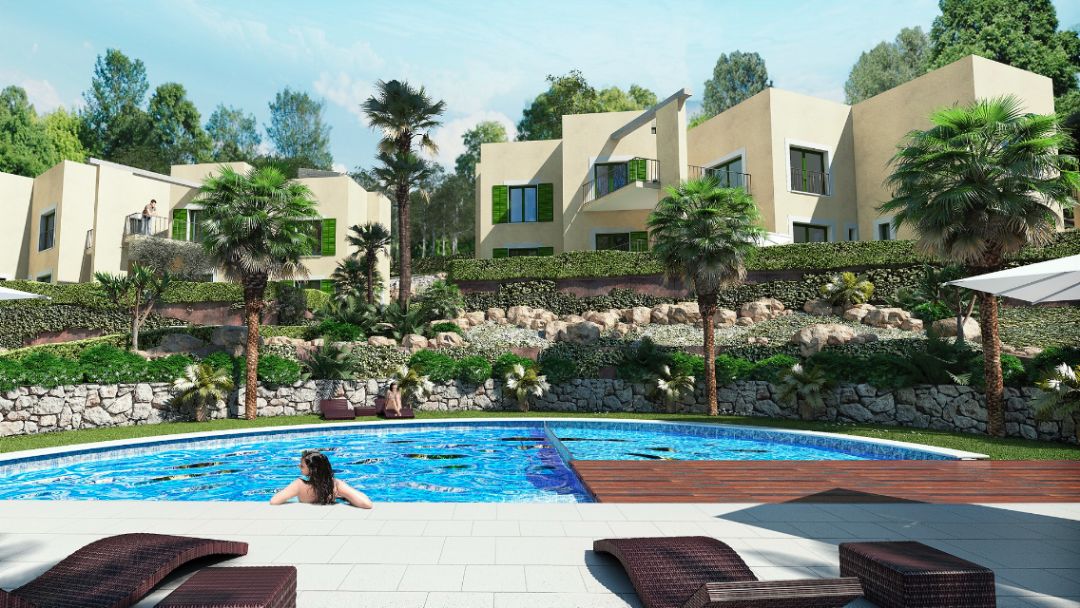
Property boom to continue in Mallorca throughout 2018
21.03.2018
Strong tourism numbers and significant infrastructure improvements have allowed the property market to prosper over the past 14 months, with growth continuing into 2018. Having undergone an impressive transformation over the past five years, the Balearics prime market is appealing to an increasingly wider audience of international buyers, with investors taking advantage of the recent tourism influx and continued growth. The island’s tourism boom has allowed for growth and development in all sectors, with legislative and infrastructure improvements supporting the already well rooted residential property market. According to recent figures from precioviviendas.com, property values increased by some 4.32% in Q3 which placed Mallorca as the only area in Spain where values increased in excess of 4%. It has also been the leading region in property price growth for the last three quarters, with Q1 and Q2 showing strong growth at 5.12% and 5.74% respectively. A key factor which has allowed for a strong property market over the years is that Mallorca has never had an issue with over supply, allowing values to remain resilient even in the most testing of times. Strong economic fundamentals, such as an increase in disposable income, higher employment, and a boost in consumer confidence, have made way for investment in infrastructure, technology and businesses, ultimately resulting in higher property values. An increase in direct investment in hotels and in schemes such as the €50 million investment in Palma Marina is also expected to do a great deal to draw wealthy yacht owners and guests to explore Mallorca and encourage local spending. The largest island in the Balearics attracts a diverse range of buyers and visitors, with a significant number of Germans, Swiss, Austrians, Brits - despite Brexit - and Scandinavians purchasing apartments and villas in Mallorca. All of this teamed with a low crime rate and the islands staggering beauty have led to it to be one of the top destinations in the world to live and own a property. Annual growth rates in 2018 are expected to sit at around 10%, with property values maintaining due to the continued demand from buyers of multi nationalities. By Laura Henderson, Managing Editor of Abode2. For more property news visit www.abode2.com
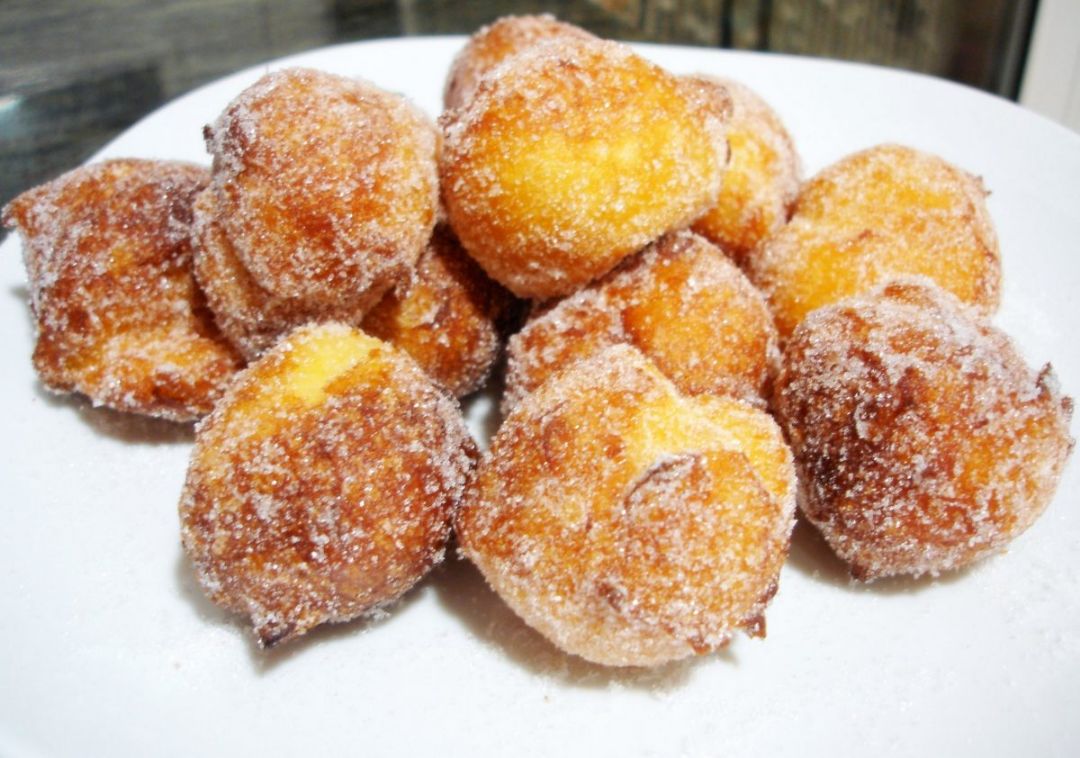
Easter isn't just about chocolate eggs
02.03.2018
Easter in Spain isn't just celebrated with chocolate eggs, there is a whole range of culinary delights to suit both sweet and savoury tastebuds. La Mona de Pascua A very typical Easter treat in Valencia, Murcia, Cataluña and La Mancha, with regional variations now found across Spain, the Mona de Pascua is a cake which has boiled eggs cooked within its rounded form. During Lent, eggs were traditionally one of the foods that Christians abstained from eating and so eggs hatched between Ash Wednesday and Easter were blessed and given as gifts, often within the cake, to grandchildren and godchildren. The number of eggs, to a maximum of twelve, represents the child's age. If you want to give baking your own a try, you can find a simple recipe for Mona de Pascua at the Spanish tourism website. Nowadays Monas de Pascua range from the traditional to chocolate coated ones and even come decorated with Spain's favourite football players! Look out for them in your local shops just before Easter. Torrijas Similar to French Toast, Torrijas are thick slices of bread that are soaked in a batter of egg and milk then fried with oil and served with honey sugar or even wine. Delicious with a glass of sweet wine from your local bar or a café con leche. Hornazo A savoury pie stuffed with chorizo, hard-boiled eggs and pork, this is found in the north in Ávila and Salamanca. Like the Mona de Pascua, the eggs laid during Lent didn't go to waste. Instead they were boiled and preserved for eating on Easter Monday, also known as Lunes de Aguas in these towns. Buñuelos Best eaten fresh from the fryer with a coating of icing sugar, a squeeze of lemon or stuffed with egg custard, these are a sweet treat to make your mouth water and have you coming back for more! Similar to a doughnut, they are made with eggs, flour, water and milk which once made into a batter are fried at a high temperature. You'll find them served at Easter at local gatherings but also in November on All Saints Day. A lot of the traditional foods eaten at Easter in Spain have their historic roots in Spain's rich past - often adaptations of Moorish foods to suit Christian beliefs. What we can't deny though, is that there is a reason they have been around for centuries. They really are truly scrumptious! Why not try them this Easter when staying at your holiday home? Or, if you are currently looking for a new home in Valencia or Murcia, contact us to find out where to head for the best local food as you start your search for your own home in the Spanish sunshine. Sources Spain.info/en/que-quieres/gastronomia/recetas/mona_de_pascua.html Spain.info/en/que-quieres/gastronomia/recetas/bunuelos_de_viento.html Thelocal.es/galleries/culture/ten-delicious-food-for-easter-in-spain Lameva.barcelona.cat/culturapopular/es/noticia/veinte-cosas-que-no-sabzas-sobre-la-mona-de-pascua
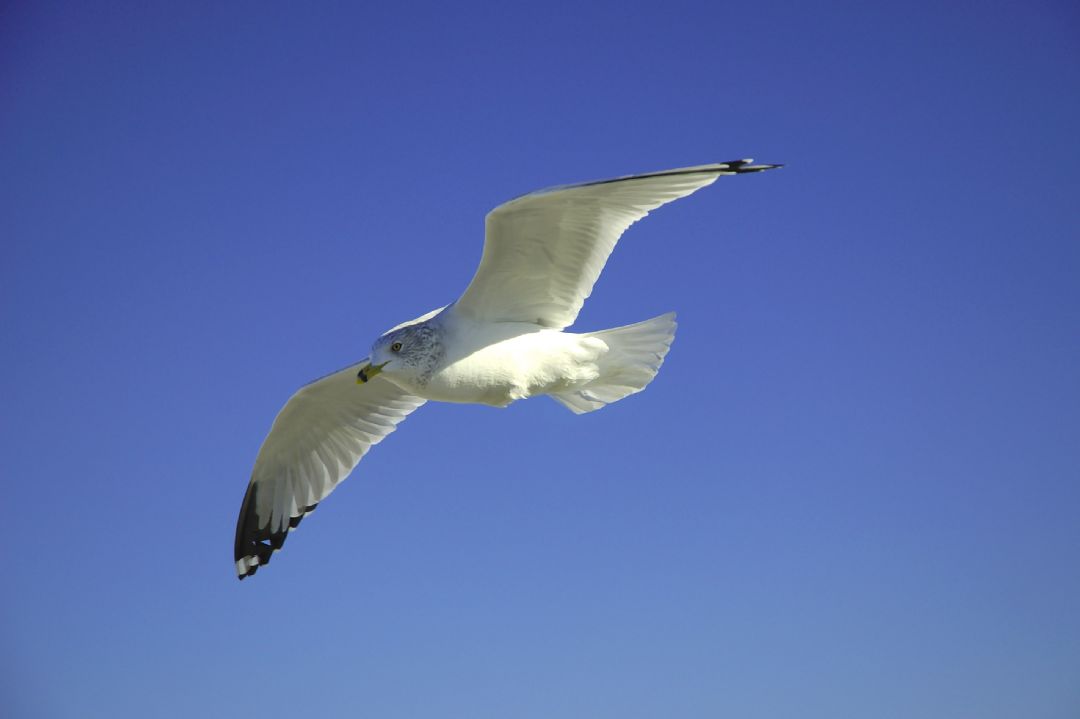
Escape to the sun this winter
26.01.2018
If you're feeling the effects of the gloomy days and cold weather in northern Europe and dreaming of your own place in a country where there is a definite sunnier side to life, then now is the perfect time to grab the proverbial (Spanish) bull by the horns and find your dream second home in the sunshine. Many of our holiday homes are just a two hour flight away, with plenty of flight options available from even the smallest of local airports. Once you have your own home on the Costa del Sol, Costa Blanca or Costa Calida, just a few of the fantastic places where we have apartments, villas and houses available, you and your family and friends can even pop over for a long weekend. Your own home away from home means you can book in advance and take advantage of super low-cost flights or book at the last-minute and just get away from the rain this weekend or a gloomy outlook for the next two weeks! Malaga on the Costa del Sol is a top choice for winter sun within two to three hours of airports in France, Germany, The Netherlands, the UK and Scandinavia. With an average of just six rainy days in February, highs of 18ºC and almost 7 hours of sunshine per day, you can enjoy walks without your snow or rain boots, beers and lunch on a terrace or café esplanade or even a walk on the beach with your shoes off. It might not be quite warm enough to dip your toes in the sea, but it's an ideal way to relax and top up your vitamin D intake as you watch the world go by. Javea on the Costa Blanca is a short drive from both Alicante and Valencia airports and also has fantastic winter temperatures, normally around 16ºC maximum and lows of 7ºC - so the low is the same as a high temperature in some parts of northern Europe! Javea has a healthy climate that has been highlighted as one of the healthiest in the world by the World Health Organisation. On a clear day you can even sometimes see the island of Ibiza, just 90km away. With an old town and port to explore as well as the Montgó Natural Park, Javea is a fantastic option for a spot of winter sunshine for those who enjoy walking, sunshine, good views and lunch or dinner by the sea. Use our quick-find property search tool to start your search for your home away from home in the Spanish winter sun! Sources www.uv.es www.holiday-weather.com/javea/ www.holiday-weather.com/malaga
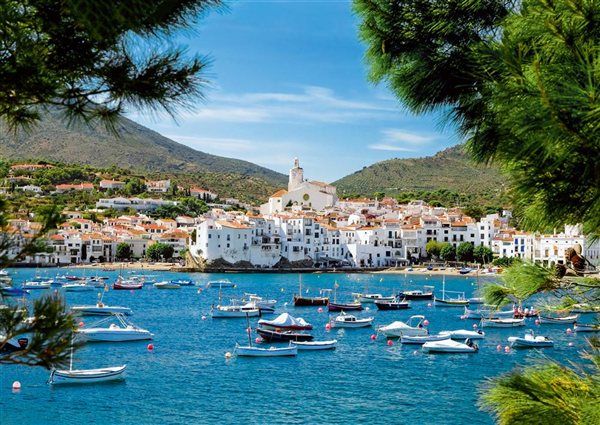
The must-visit Dalí Triangle of the Costa Brava
08.01.2018
Born on the 11th May 1904 in Figueres on the Costa Brava, Salvador Dalí is famed for his contribution to the world of Surrealist art. Dalí grew up in a middle class, well-educated background yet he, like the rest of the Spanish nation, lived through the turbulent times of the Spanish Civil War, which came to influence his work and lifestyle. Dalí was an outspoken artist whose friendship group included the key artists and intellectuals of the era, including Luis Buñuel, Federico García Lorca and Pepín Bello. Dalí's works were influenced by Impressionism, Cubism, purism and futurism. He worked with Luis Buñuel on Un chien andalou, a famous film which also coincided with the period in which he met his wife, Elena Ivanovna Diakonova, who he referred to as Gala. Gala was his manager and his muse, and even today, one of his homes is named after her. The Dalí Triangle is located near our properties in Cadaqués. Dalí is said to have been inspired by the town, where he is quoted as saying, "I have spent a delightful summer, as always, in the perfect and dreamy town of Cadaqués. There, alongside the Latin sea, I have been quenched by light and colour". Cadaqués is the jewel in the crown of the Dalí Triangle with Dalí's home open for visits. Casa Salvador Dalí is open to the public and it is incredibly popular so if you plan to visit from your home in Cadaqués, make sure you book in advance. The other towns in the Dalí Triangle are Figueres and Púbol. Figueres boasts the Dalí Theatre-Museum with a large number of his works on display alongside the Dalí Jewels Collection. Púbol is home to the Gala Dalí Castle House-Museum, the castle that Dalí gave to his wife Gala. There is a fantastic collection of Dalí's work on show here, but perhaps the most beautiful attraction is the view of the stunning bay below. A cultural hotspot, the Dalí Triangle offers art, history and a passionate love story in a stunning setting near our property for sale on the Costa Brava and specifically property for sale in Cadaqués. Sources: Salvador-dali.org En.costabrava.org Telegraph.co.uk
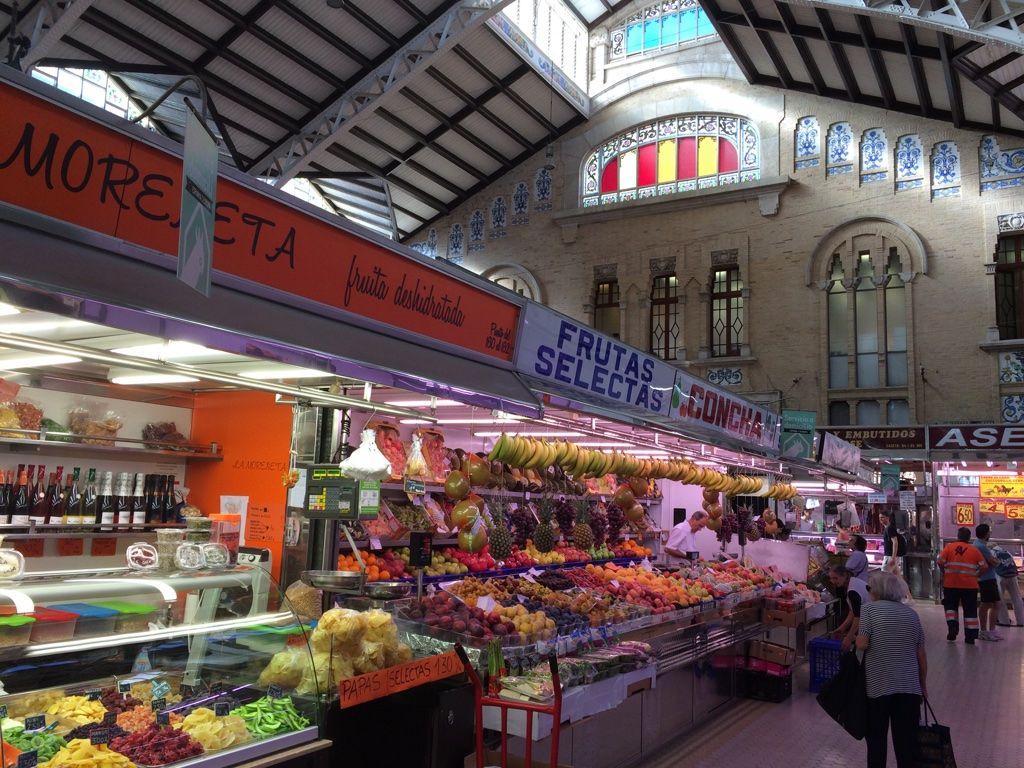
Gastronomic delights in Valencia
09.12.2017
Did you know that one of Spain's most famous dishes actually comes from Valencia? Paella, that mouthwatering mix of vegetables, meat, seafood, saffron and of course, rice, can be traced back to Moorish times when the Moors introduced rice to Valencia. It's now one of Spain's gastronomic icons and the best versions of it are still served up around Valencia. Locals in the know head to Playa de las Arenas for great paella served with chilled wine and a view of the sea or to Albufera Natural Park where the sunsets are spectacular and boat trips are a must. Valencia produces some fantastic wines, from white to red as well as sparkling and Moscatel de Valencia. If you want something with less of a kick, try the local drink, horchata which is made from the tiger nut, a fruit that is only grown in 16 villages in the Valencia area, thus guaranteeing the quality of the fruit. It's a refreshing drink that looks like a glass of milk and is served with fartons, spongey long shaped biscuits. The best horchata can be found in Horchaterias in the El Carmen district of Valencia, this is the pretty old town of the city. Valencia, like most Spanish villages, towns and cities has its fair share of fantastic tapas and plenty of places to enjoy them in. Tapas work slightly differently to other cities in Spain and in Valencia it is more normal to order enough tapas to cover you for the evening and slowly make your way through them with friends and family. Fresh local food is available in abundance at the beautiful central market. The building itself is worth a visit just to take a look at its interior. There are more than 300 local business selling cheeses, hams, jamon serrano, fish, fruit and vegetables amongst other gastronomic delights. Cafés and restaurants can also be found around the market which are perfect for lunch. You can buy supplies here to enjoy at your own pace back in your holiday home in Valencia. To search for a holiday home for sale in Valencia you can also use our new search service to find the best home for you. Sources: Visitvalencia.com Mercadocentralvalencia.es Valencia-tourist-guide.com
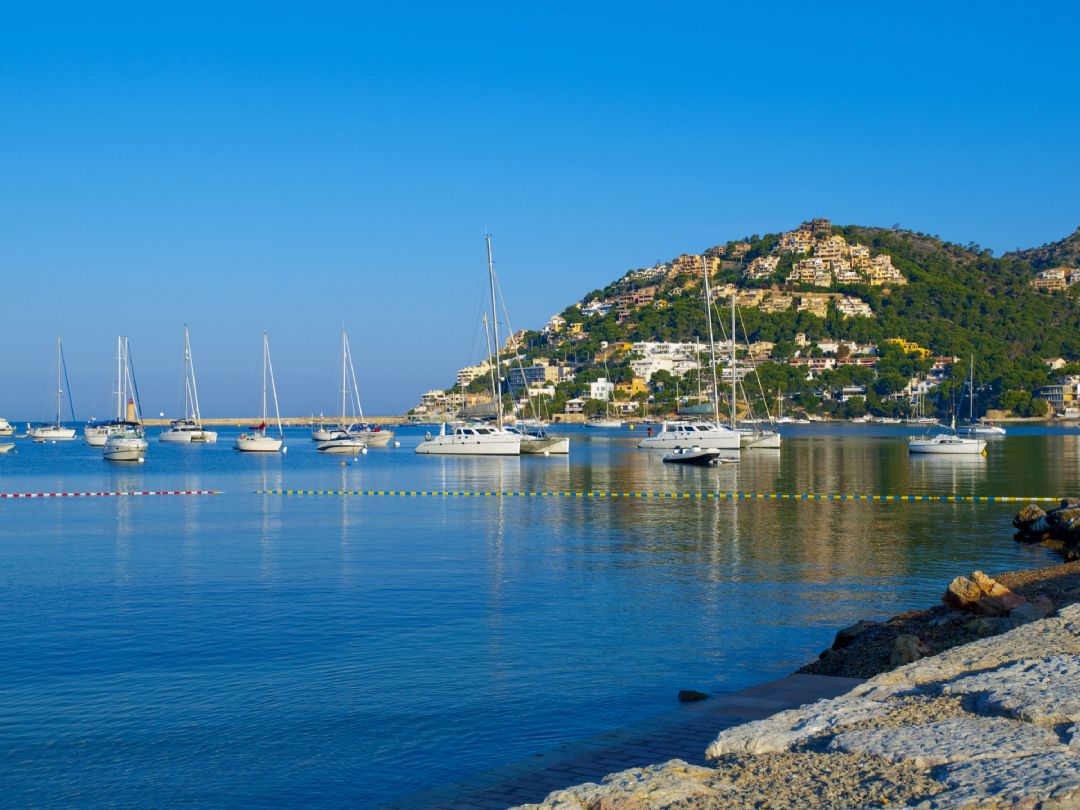
Why now is the time to buy in Spain
09.10.2017
Since the recession in 2008 and the years since, buying a home in Spain has been a cost-effective investment for those with money ready to invest. Taking advantage of the consistent fall in prices across Spain and an increase in foreclosures, investors have been able to buy property at appealing prices. 2017 has changed the doom and gloom market to one of more positive outlooks with continued opportunities to invest in your dream home in the sunshine. Experts predicted that 2017 will be the start of an increase in prices across Spain as confidence in the market grows have, so far, been proven correct. Of course, as confidence grows, so does lending and the speed at which people make a decision on a major purchase. With increases in house prices of up to 23% in Barcelona and 21% in Girona - the highest increases by region, combined with low lending rates, the Spanish property market now represents an even greater investment opportunity. Construction has also bounced back, with experts predicting an increase of 6% in both 2017 and 2018, peaking at 10% in Catalonia and Madrid so far this year, where newly-constructed homes have increased by 10% as demand has grown. Combined with the Spanish economy growing at around 0.9%, confidence is well and truly back in the Spanish housing market. Spain's Golden Visa scheme has also influenced the increase in house purchases with an increase in buyers from Turkey who are looking to escape the political uncertainty of their home country. Buyers from the UK continue to invest in Spain despite the fall in the value of the pound as they look to sure up investments pre-Brexit. Whilst the pound has declined recently against the euro, experts are predicting a bounce-back as the UK's economy remains stable, making now a good time to start the Spanish home-buying process. Try our new Search Service to find your dream home in Spain, with property listings delivered directly to your inbox, for property in the areas you are interested in. Available simply by completing a quick-fill form. Sources Theguardian.com Bloomberg.com Propertywire.com Ine.es Thelocal.es
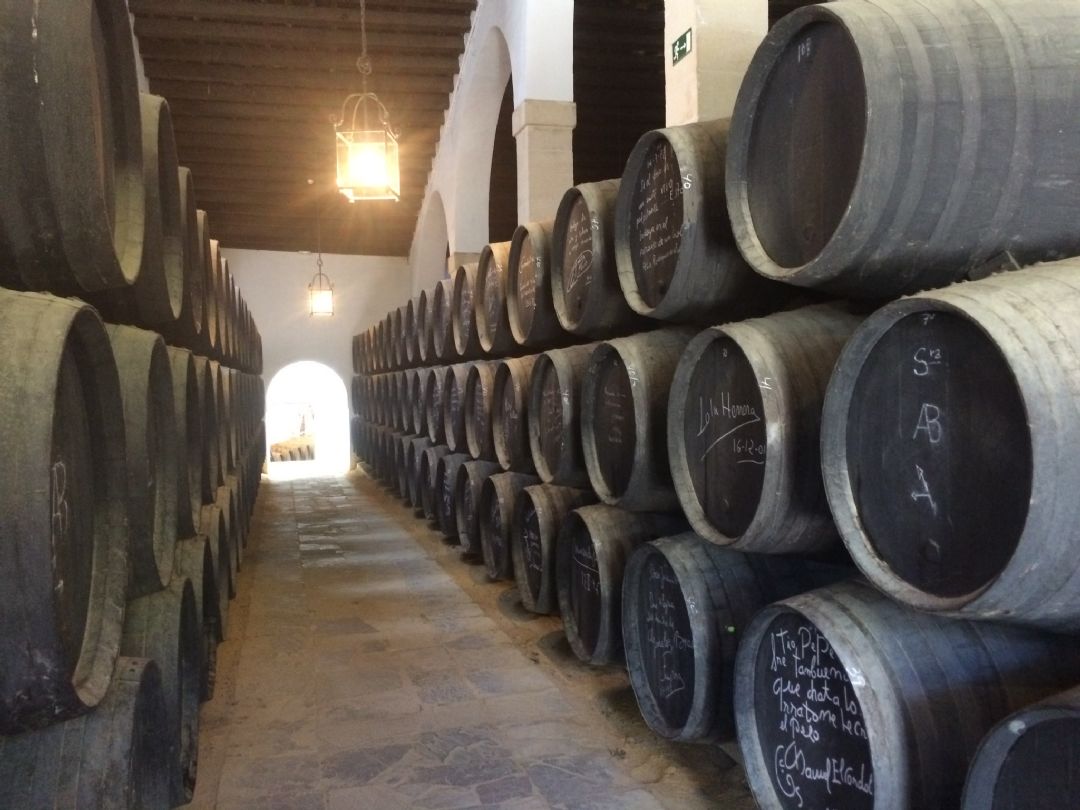
A sip of Sherry
15.09.2017
Sherry, like many wines, takes its name from the place in which it is produced. Sherry is a DO wine, a protected Denominación de Origen. In this case it is produced in the Sherry triangle which covers the towns of Jerez de la Frontera, Sanlúcar de Barrameda and El Puerto de Santa María, located in Andalucía. The DO status guarantees that any wine produced in that region with the label Sherry is made according to a set of guidelines guaranteeing its authenticity. Sherry is a fortified wine which means that the fermentation process of the grape is stopped with the addition of a high alcohol "brandy". This stops the fermentation of the sugars on the skins of the grapes and produces a final wine with a higher alcohol level. Sherry styles Sherry comes in two main styles: dry and sweet. Depending on the style, different grapes are used to get the final taste and finish jut right. For drier sherries, Palomino is the perfect grape. For the sweeter Sherry styles, Pedro Ximénez and Moscatel are used. Moscatel is a grape variety which you might recognise from other regions of the world - it's popular in Valencia, for example, and in parts of France. Tastes and aromas - the influence of the sea Sherry's salty, nutty taste and aromas come from the environment in which it is nourished and aged. The winds that alleviate the heat in this hot part of Spain bring in the saltiness from the sea and add to the flavour profile of Sherry. Like whiskey and brandy, sherry is aged in a barrel system, known as solera, which blends wines from various vintages to create a wine in line with regulations, taste profiles and house styles. Food pairing Coming from a country which brought tapas to the world, Sherry's nutty, salty or sweet palate means that it pairs wonderfully with all of your favourite Spanish tapas. From Manchego cheese, walnuts or Salmorejo with Fino Sherry to Palo cortado with duck or a saltier Manzanilla with cod. A sweet Pedro Ximénez is divine with cooked apples, cooked pears or icecream - serve drizzled on top for a luscious contrast of flavours! Or simply serve a glass of Pedro Ximénez or Oloroso on its own. Sherry can be found all over Spain but it is more likely to be found in bars and restaurants in Andalucía. If you have a second home in Cádiz or on the Costa de la Luz, a day trip to a Sherry producer is easy to do to learn more about this ever-popular drink. Make sure you stock up on fabulous cheeses, ham and local bread on your way home to enjoy a glass like the locals do! Click on the link Property for sale Costa de la Luz to see the selection of property currently on offer here on ImmoVario. Sources: Winefolly.com Sherry.wine and Sherry.wine
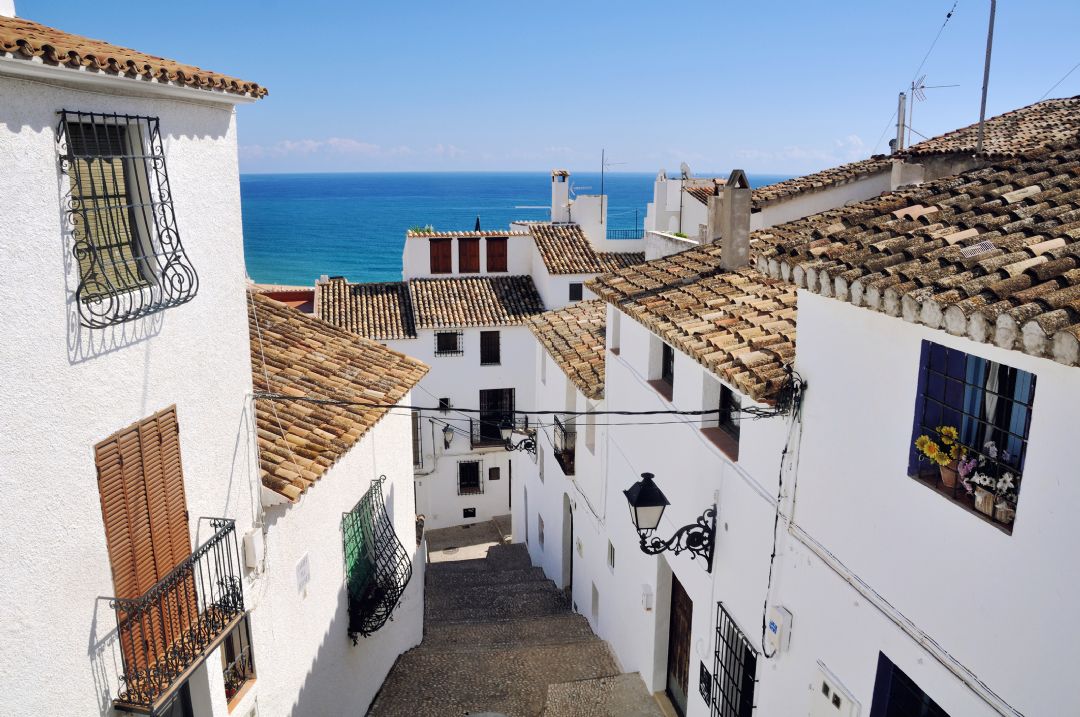
Sun, fun and culture on the 'White Coast'
04.09.2017
Costa Blanca is a much-loved and exceptionally popular tourist destination situated on the south-eastern coast of Spain in the province of Alicante. Renowned for sun, fun, sea and sand, it has over 200 kilometres of Mediterranean coastline and includes the major resorts of Alicante, Benidorm, Dénia, Moraira and Torrevieja. Although the landscape is dominated by the Mediterranean sea, Costa Blanca North has a backdrop of impressive mountains filled with many trees, aromatic plants and picturesque villages just waiting to be explored, while Costa Blanca South is well-known for its flat, arid terrain and beautiful beaches. This thriving tourist destination also has many important archaeological sites as well as the UNESCO world heritage site 'Palmeral of Elche'. The main city of Alicante, one of the region's top beach resorts, has numerous visitor attractions. Perched high on top of Benacantil Mountain, the Castillo de Santa Barbara affords spectacular views across the city and bay of Alicante, and in the summer months it plays host to many evening concerts. For art lovers, the Museum of Contemporary Art of Alicante showcases an inspiring collection by Eusebio Sempere as well as the works of other important artists including Dali, Miro and Picasso. Benidorm is the largest resort with wonderful sandy beaches, excellent shopping facilities and a fun-packed nightlife. Nevertheless, it also has its fair share of interesting museums including Casa Museo de Benidorm, a contemporary art museum, the Wax Museum, the Maritime Cultural Centre and the Agricultural Museum. Captivating the imagination of thousands of visitors each year, the mountain top village of El Castell de Guadalest, a mere 15 miles from Benidorm, is famed for its breathtaking views. Prompted by the pound's strength against the Euro, there has been considerable interest this year from British buyers who want to purchase a property in Spain. Because of its mild Mediterranean climate and its popularity with the British, the Costa Blanca is an ideal location for either a second home or a retirement home as well as being very attractive to those buyers seeking investment properties that can be let out to holidaymakers or for long-term rental. Immovario currently has hundreds of apartments and houses in this region for sale, for instance property in Cabo Roig, Pilar de la Horadada, Los Balcones and various other nice urbanisations of Torrevieja and surroundings. Visit the website today (www.ImmoVario.com) and click on the link Houses for sale Spain or Apartments for sale Spain to see the extensive selection of affordable property currently on offer. Links for references and further reading: Costa Blanca Tourist Board UNESCO World Heritage List - Palmeral of Elche Alicante Tourist Board Castillo de Santa Barbara El Castell de Guadalest Tourist Information Office Museum of Contemporary Art of Alicante
